AP LIMITED EDITIONS Maki-e Fountain Pen by Omote Masanori VERY RARE Only 18 MADE
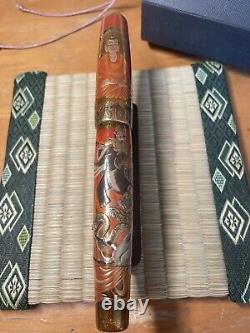
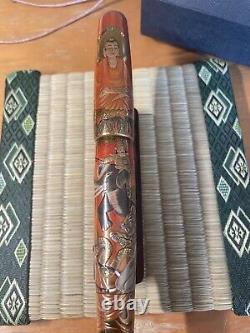
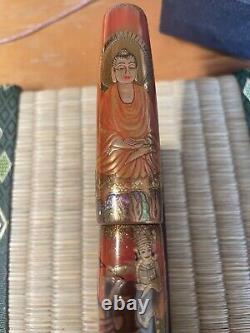
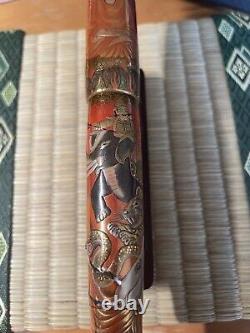
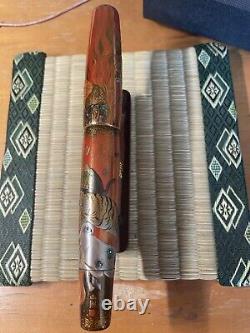
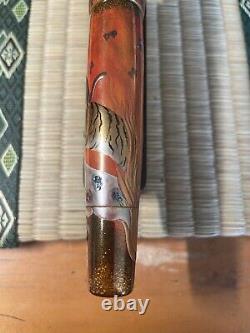
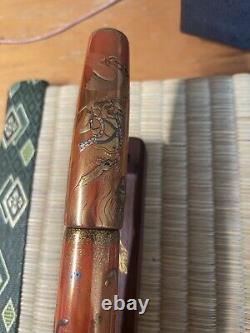
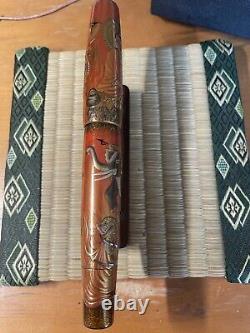
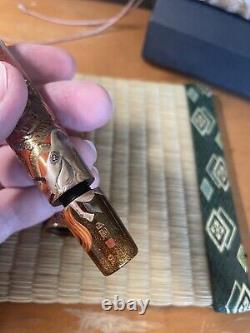
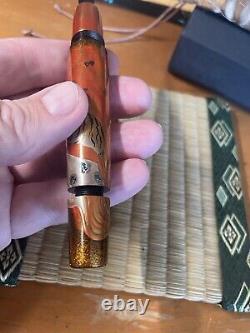
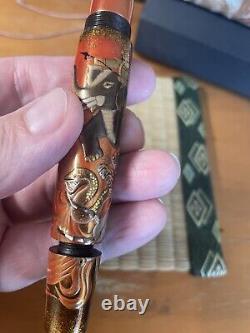
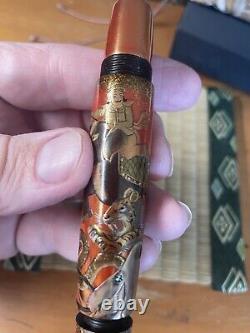
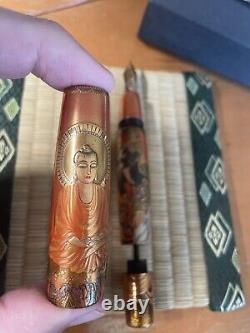
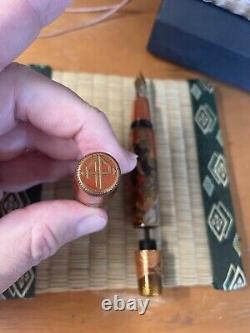
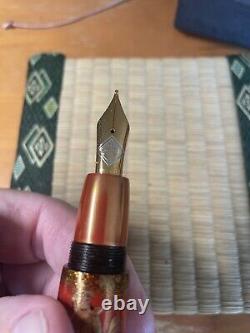
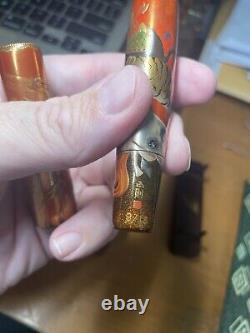
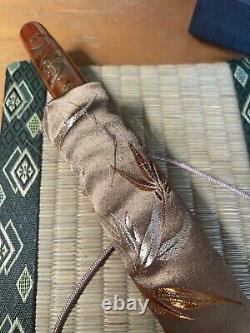
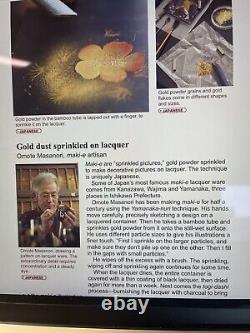


I collected Japanese fountain pens for 15 years and I confess this is one of the 3 most beautiful specimens I have seen ever (one of the others, the DANITRIO, is also on my site). Superlatives are not puffery in the case of this AP maki-e fountain pen honoring the Buddha.
First, the technical details: this pen is a Mikado, the largest Japanese pen normally made. It resembles a long cigar.
The pen barrel, nib section and feed are made of ebonite which was then coated laboriously during the rainy season with urushi, the toxic lacquer that protects pens and pots among other things from being ruined when dropped or thrown against a wall. This was a limited edition of 18 pens which, as they are entirely handmade, probably each have slight differences. One can say, then, that this pen is unique.
It is a work of art. The design incorporates natural pigments, gold and abalone shell (raden). It is breathtaking in its detail.The nib is 18k two-tone gold and bears the name AP, the company that introduced very high-end maki-e masterpiece fountain pens to the West. This pen is an eyedropper filler; and you need to unscrew the nib section slowly and drip the ink into the barrel. When you use the pen to write - I never had the nerve - you unscrew the blind cap at the bottom very carefully.
Force the rod out; it must be unscrewed slowly, deliberately and carefully to regulate the ink flow you desire. This pen comes with a handmade kimono made for me by the mother of a famous Japanese pen maker. AP is an amazing company which will help with any issues you may have, which I think will be few if any. The artist is Omote Masanori who studied under some of the greatest maki-e artists of the past generation, and has himself trained at least 4 of the major maki-e artisans today.I never used this pen, and there is no evidence that it was ever inked. I have the other pen but have not decided whether I want to part with it yet.
It is no longer available from AP or anywhere. Feel free to make a reasonable, serious offer. However, it must be for an unused pen like this one. I will work with you. I would gladly keep this pen myself, but as writing longhand is so difficult for me because of essential tremor, I want this incredible work of art to go to a deserving home.


